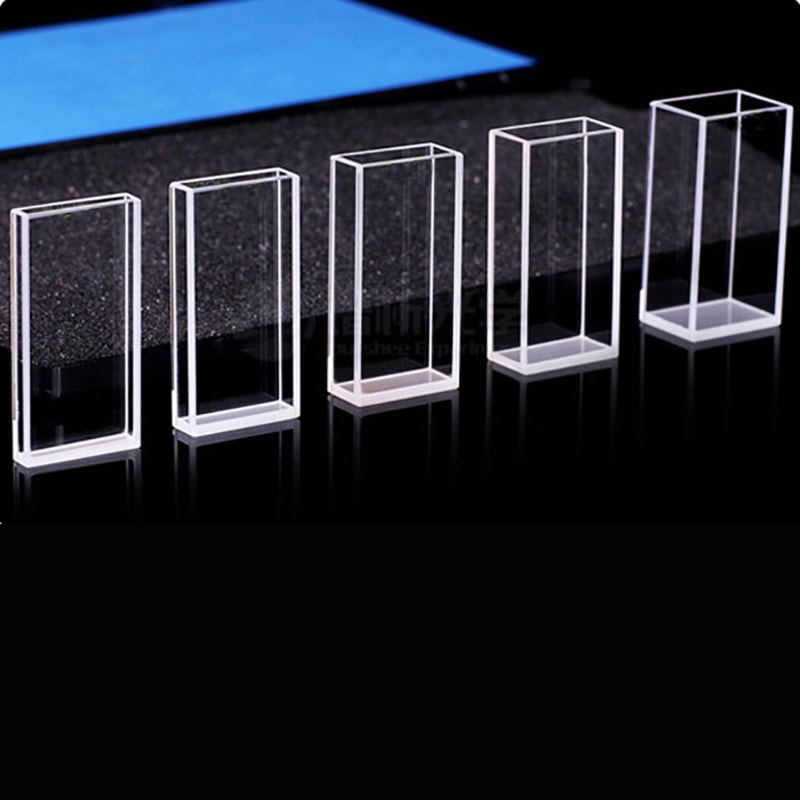The spectrophotometry procedure is the foundation of scientific discovery. It unravels the mysteries of radiation absorption and transmission at particular wavelengths. Cuvettes are the vessels at its core, which houses the samples that are to be studied. These small containers might seem straightforward, but their complex, from cuvette’s path length to material choice, hold the key to unlocking precise results on substance concentration and quality. This fascinating field will be explored in which cuvette dimensions and size influence the results of every experiment.
Power of Cuvette Path length
Imagine a beam of light passing through the sample. The result depends on the path length of the cuvette. This is how far light travels within the liquid. For many labs, a cuvette of 1 centimeter length is best as it provides an equilibrium between sensitivity as well as practicality. What’s the reason? The longer the distance, the more light is absorbed which amplifies the signal for dilute samples. For concentrated solutions, like nucleic or protein acids, a shorter path length could change the rules. This can reduce dilution, and also preserve valuable samples while making preparation faster. What’s the most important lesson to take away from this? It is an art to align the length of a path with specifications for the sample. This increases accuracy.

Image credit: cuvet.co
Cuvette Dimensions A Look at More Than What Meets the eye
The size of the cuvette is not just the amount of liquid can be contained however it is also how it works with the instrument. They are available in a variety of volumes and shapes to suit specific applications. For example semi-micro cuvettes with smaller dimensions and more robust walls can handle tiny volumes of sample like a few microliters of an uncommon biological extract. The thick walls let light flow through the sample and without wasting just a drop. Compare this to an ordinary cuvette and the difference is striking there are fewer pipetting steps, less room for error and results that stand against scrutiny. It’s a clever modification that proves size isn’t just a number, it’s a strategy.
The 1cm Path Length Cuvette The 1 cm Path Length Cuvette is a lab favorite
Why does the 1 cm path length cuvette reign supreme in so many experiments? It’s the sweet spot for biological measurements, where samples are often scarce and every milliliter counts. This classic design gives constant absorbance measurements, without overpowering the detector. This isn’t the model that can be used for all. It’s not a single-size hero. The choice of the correct instrument is vital, not only using the one you are familiar with. A tool that isn’t matched is comparable to a cuvette that isn’t properly matched.
Materials Matters: More than Size and Path
Cuvette dimensions are only half of the story. The choice of material is the final piece. The high transmission rates of glass and quartz cuvettes allows light to move through them without interference. They’re durable and can be reused. This makes them ideal for spectroscopy. Plastic cuvettes are also inexpensive and simple to use. There is no need for cleaning or cross-contamination. Simply take the cuvettes and discard. These are great for tests using aqueous solutions or DNA/RNA tests. What’s the downside? Lower accuracy at certain wavelengths. For those who are a purist, quartz is preferred while pragmatics could prefer plastic.
Accuracy in Practice
Cuvettes’ versatility is what makes them so attractive. Spacers in combination with short lengths of the path allow for the handling of large samples while larger vessels can handle large amounts. The clarity of results is dependent on the length of the path along with the size and substance employed. Think of a lab measuring a protein. A semimicro cuvette offers shorter paths, which reduces the need for dilution and gives reliable results quicker. Contrast that with a sloppy exchange of cuvettes in mid-experiment and the results are shaky. The smallest of details can have the greatest impact in spectrophotometry.
Cuvettes aren’t huge, however, their function is huge. Cuvettes come in various sizes including the cuvette that has one centimeter length to ones that are custom made. They are able to bridge the gap between insight and sample. The right cuvette can transform an excellent measurement, regardless of regardless of whether you’re seeking concentration or purity and precision, into a fantastic measurement.